
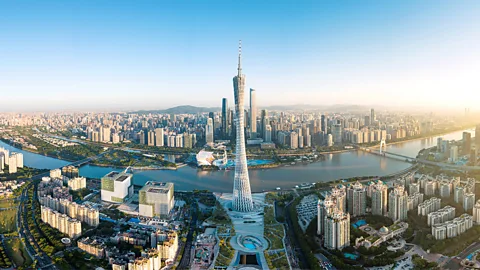 Getty Images
Getty Images
From AI-driven transport to seamless cashless living, these five city clusters top the Global Innovation Index for their cutting-edge technology and everyday ingenuity.
Between the rapid rise of AI, self-driving cars and green energy going mainstream, innovation is advancing faster than ever. New inventions and patents are emerging from countries and cities across the globe, but a few places stand out as driving the greatest progress.
The 2025 Global Innovation Index (GII), published annually by the World Intellectual Property Organization (WIPO), ranks the top countries and metro-city clusters based on criteria including investment patterns, technological progress, adoption rates and overall socioeconomic impact. Collectively, the 100 leading clusters – from San Francisco to Shenzhen – account for more than 70% of global patents and venture capital activity.
We spoke to residents of the top five innovation clusters to discover how technology shapes daily life and how visitors can experience their cutting-edge ideas – often before they reach the rest of the world.
1. Shenzhen-Hong Kong-Guangzhou
China broke into the GII's top 10 for the first time this year, propelled by its surging number of patents, scientific investment and venture capital growth. It now hosts 24 of the 100 leading clusters in the report, with the South China tech centre of Shenzhen-Hong Kong-Guangzhou coming in at number one.
In this region, technology is woven into everyday life and innovation is embedded in the culture. Hong Kong resident Jamie River says you can be at a street market where vendors use QR codes for payments next to handwritten price signs, while small shop owners manage their delivery orders through three different apps. "The collision of old and new creates this weird energy where nobody's scared to try stuff," says River, who has lived here for three years.
Hong Kong's Octopus card, which originally launched in 1997 as a payment method for public transport, is now a favourite everyday tech solution that can be used to pay for everything from vending machines to parking meters.

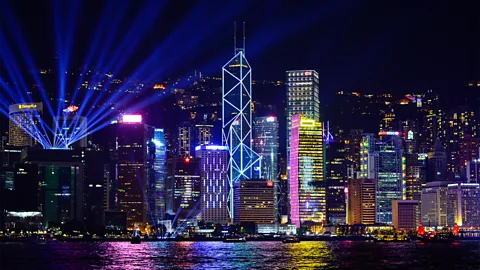 Getty Images
Getty Images
To experience Hong Kong's cutting-edge technology, River recommends visitors take the Star Ferry at night and watch the Symphony of Lights show, which synchronises a musical score with lights, lasers and LED screens across 43 buildings. For a glimpse of creative crossover, PMQ (a former police quarters) now houses studios, shops and cafes. "You'll see 3D-printing workshops next to traditional calligraphy studios," he said.
Top 10 innovation clusters
1. Shenzhen-Hong Kong-Guangzhou
2. Tokyo-Yokohama
3. San Jose-San Francisco
4. Beijing
5. Seoul
6. Shanghai-Suzhou
7. New York
8. London
9. Boston-Cambridge
10. Los Angeles
Home to global corporations from Huawei to Tencent, Shenzen's transformation from fishing village to tech powerhouse was an intentional move by the Chinese government when it designated the city as its first Special Economic Zone in 1980, offering tax breaks and incentives to spur innovation. Its status as a hub for creativity only grew after it was named a Unesco Creative City in 2008, with investment funding makerspaces such as the Shenzhen Open Innovation Lab.
"This supportive framework enables rapid scaling and experimentation," said Leon Huang, a resident since 2008. "Makerspaces such as the OCT Loft and Shekou's Design Society are available to everyone, granting affordable access to advanced tools, including VR setups. The variety of people who frequent these spaces, including hobbyists, students and professionals from tech companies like Huawei and DJI, contributes to a truly inclusive atmosphere."
Huang suggets visitors catch one of the elaborate drone shows that take place over Shenzhen Talent Park Bay or during major events such as the Spring Festival and National Day. The city recently set the record for the world's largest drone show, employing nearly 12,000 drones.
2. Tokyo-Yokohama
Ranked second, the Tokyo-Yokohama cluster produces the highest percentage of international patent filings in the world, accounting for more than 10% of global filings. What residents appreciate, however, is that the technology and innovation feel practical rather than flashy.
"In Japan, tech isn't some wild imagination of flying cars like what we all imagined 2050 would be," said Dana Yao, who met her husband in Tokyo and now splits her time between Japan and the United States. Instead, she says, it's the train card that can be used for buses and vending machines, and the AI sensors at convenience stores that allow self-checkout and cashless pay. "You'll find these small but mighty innovations everywhere. They're high-tech, but still so human and actually helpful."

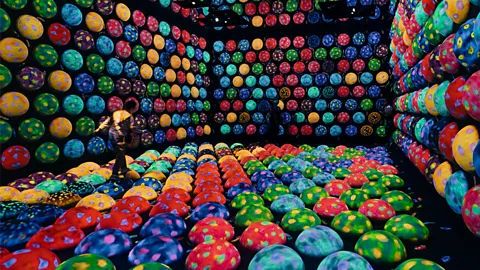 Alamy
Alamy
Travellers can experience this tech-forward world at the Henn Na Hotel where check-in is fully automated, some of the staff are robotic and "smart beds" adjust the temperature for optimal sleep. Yao also recommends riding the driverless train on the Yurikamome Line in Tokyo Bay. "It's fully automated and gives you stunning views of the city and Rainbow Bridge," she said.
For a dose of digital wonder, teamLab Planets offers a tech-immersive art experience. "Entire rooms react to your movements, light and sound," Yao said. "It's just incredible."
3. San Jose-San Francisco
Known worldwide as Silicon Valley, the San Jose-San Francisco cluster leads the world in venture capital, generating nearly 7% of all global deals. The GII report also found it to have the most concentrated innovation activity per capita.
That density is what continues to attract entrepreneurs and start-up founders, especially as the AI opportunity looms large. "I've never wanted to live in San Francisco until now. It's like the original dot com boom. Very smart people are congregating here and people who left have come back," said new San Francisco resident Ritesh Patel, founder of Ticket Fairy.
That means networking possibilities are everywhere. "You could be at a dinner having a conversation about challenges you're facing as a startup founder and the next minute someone at the table says that they can help," he said. "They send a text and suddenly you have an intro or meeting with a relevant person that you could never have reached by email or social media. It's wild!"

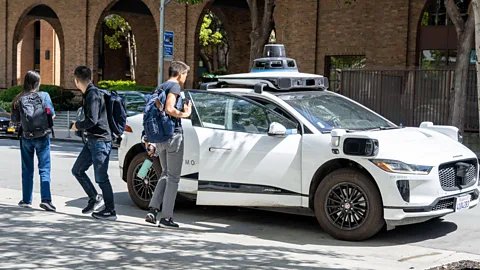 Alamy
Alamy
For visitors to San Francisco and Silicon Valley, it's all about trying tech before it hits the mainstream. "You'll discover cutting-edge tech that the rest of the world won't know about for six to 12 months," said Patel. Ride-hailing services like Uber and Lyft were widely used here before they became global companies – and now autonomous-driving Waymo cars have significant market share in the area and can be used by anyone who downloads the app.
4. Beijing
In the GII, China's capital outscored every other city for scientific research output, contributing 4% of all globally published papers. But residents say Beijing’s real strength is its balance between high-tech infrastructure and deep cultural roots.
"Other 'smart cities' really focus on modern edge, but Beijing blends innovation, culture and livability, which makes it feel simultaneously advanced but unique," said AI futurist Elle Farrell-Kingsley, who currently calls Beijing her home base. She says daily life is powered by super apps like Alipay and WeChat, which both include translation options, QR code payments and food ordering solutions. She also says AI, particularly Deepseek and DouBao, is built into daily services, which makes translation easier for English speakers.
More like this:
• Inside Asia's best countries for expats
The only frustrating thing can be leaving home and finding services aren't quite as seamless elsewhere. "It all functions so well here, it's almost forgettable how integrated and innovative these services can be until leaving," she said. "I rarely see major tech mishaps, and often find myself frustrated or impatient when visiting other countries and not having these services or things not running as smoothly."

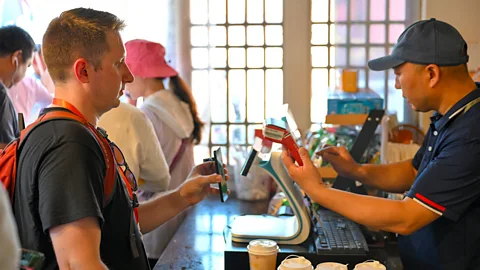 Getty Images
Getty Images
Travellers can experience the city's advanced AI firsthand by booking Baidu's Apollo robotaxi. "It's incredibly exciting to experience, especially because there’s no steering wheel!" said Farrell-Kingsley. "You simply hop in and the car sets off on its own, which feels both futuristic and surprisingly safe."
5. Seoul
Ranked fifth in the GII's innovation clusters, Seoul accouts for 5.4% of global patent applications and leads Asia in VC deals (coming in second overall to San Francisco). Residents say South Korea's drive to innovate comes from necessity, as the small country has a limited amount of natural resources to draw on.
"The country has to compete through innovations and technology," said Chris Oberman, who has lived in Seoul since 2024 and writes about his travels at Moving Jack. "Many people's grandparents lived in poverty, so there is still this huge urge and energy to grow, improve, innovate and not fall behind."

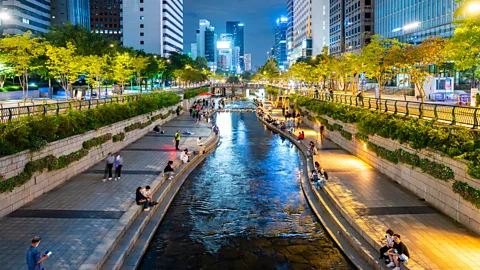 Getty Images
Getty Images
Much of the innovation and technology is baked into everyday life. Homes typically have doors that unlock with digital codes, and cashless payment systems mean that you only need your phone when heading out. "Keys, cards, my wallet, cash; I can just leave [them] all at home," said Oberman.
Visitors can experience the city's futuristic infrastructure along Cheongyecheon Stream, a walkable plaza area with self-driving electric buses that you can hop on and off. Across the city, cashierless convenience stores operate 24/7, allowing customers to take products and pay at smart machines, while AI systems track inventory and prevent theft.
--
If you liked this story, sign up for The Essential List newsletter – a handpicked selection of features, videos and can't-miss news, delivered to your inbox twice a week.
For more Travel stories from the BBC, follow us on Facebook and Instagram.
.png)



